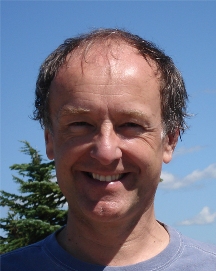

Peter Lansdorp


- Please tell us about a significant event or moment in Cytometry that you experienced, in a lab, at a conference, or at an informal gathering. Humorous anecdotes, historic photos, brochures, papers, etc, are also welcome.
- The development of phycoerythin dyes. This increased the sensitivity of antigen detection and increased the number of parameters that could be used in flow cytometry.
- What do you feel was your major contribution to the field of Cytometry?
- The development of quantitative fluorescence in situ hybridization using directly labeled PNA probes to measure the length if teloemere repeats in cells by flow cytometry or in chromosomes by image cytometry.
- What drove you to this achievement?
- Frustration with existing techniques to measure telomere length.
- Why was it that your team was able to do it? Was it a special skill? Sudden insight?
- No experience in FISH helped!
- Was someone else’s work or influence fundamental in driving your work? Please describe.
- The discovery of PNA by Michael Egholm and Peter Nielsen in Denmark was key as was Michael’s support in exploring whether PNA could be used for FISH.
- How do you think your work impacted the field of Cytometry?
- It expanded the use of quantitative tools to measurements of DNA repeats that are clinically relevant.

- Peter Lansdorp
- Professor of Medicine University of British Columbia
- Senior Scientist Terry Fox Laboratory
- BC Cancer Research Centre
- 675 West 10th Avenue
- Vancouver, British Columbia V5 1L3 Canada




